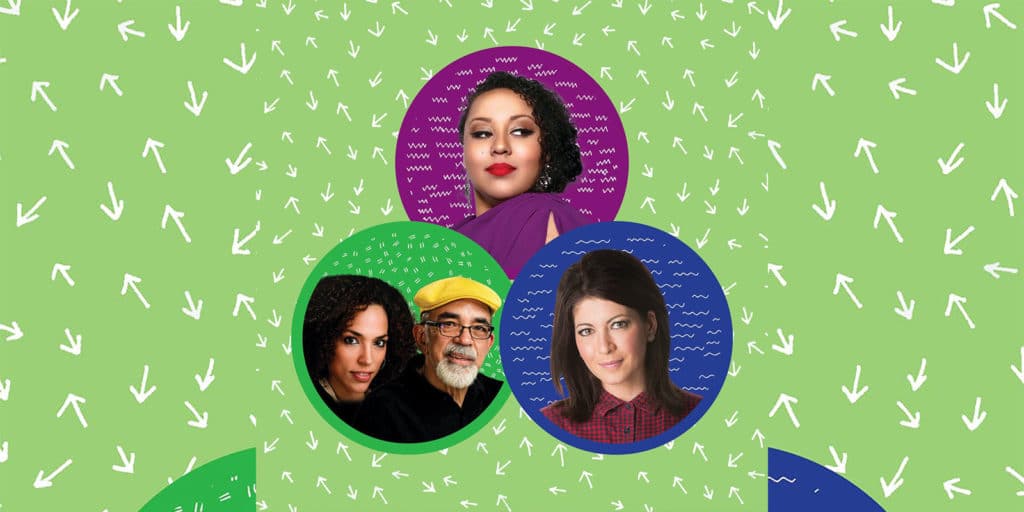Carnegie Hall’s Weill Music Institute presents a Musical Explorers concert for families (ages 4-8) with introductions to jazz, bomba & plena, and Brazilian music on Facebook and Instagram on Wednesday, June 17, 2020 at 2pm. FREE
The concert features Brianna Thomas singing jazz, Juan Gutiérrez and Julia Gutiérrez-Rivera of Los Pleneros 21 singing, drumming and dancing Puerto Rican bomba and plena; and Fabiana Masili sharing the fun sounds of Brazilian Carnival. The show is hosted by L. Steven Taylor.
All of these musical forms are related expressions of African culture in the Americas. They represent North America, the Caribbean and South America. No matter where you look, people do similar things. Why? Because we’re all humans.
You can learn more with Carnegie Hall at carnegiehall.org
Jazz
Jazz is Creole African-American music from New Orleans. But New Orleans is a Caribbean city so jazz is based on Caribbean rhythms and traditions including the syncopated rhythms of Haiti and Cuba, and Trinidad Carnival.
In the Americas, Creole is French-Black. Haiti, the French Antilles and Trinidad are Creole lands.
Brianna Thomas is an NYC-base straight-ahead jazz vocalist.
Bomba & Plena
Bomba and Plena are traditional Puerto Rican musical forms. Though folkloric, they are still active in Puerto Rico.
Bomba
Bomba is a unique Puerto Rican dance in which the dancer challenges the lead drummer to keep up with their dance movements. In bomba, the dancer plays the drummer.
Dancing bomba is both an expression of one’s place in the community and one’s individuality within the community. It’s really fun and easy. People dance bomba at night in town squares across Puerto Rico.
Plena
Plena is an old Puerto Rican form of spreading the news that grew out of European troubadour and West African griot (storyteller) traditions. Pleneros are the original rappers.
Plena is sung over handheld drums similar to tambourines. Singers riff about news of the day and flirt with the crowd. Many Puerto Ricans on the island know plenas by heart and everyone sings along. Young people dance the electric slide to plena on the street. It’s fun.
Bomba and plena traditions are incorporated into salsa music and dancing in 1960-70s New York City.
Juan Gutiérrez and Julia Gutiérrez-Riveraare founders of Los Pleneros de la 21, one of New York City’s leading bomba and plena organizations.
Brazilian Carnival
Samba is Brazil’s iconic music. In the 1960s, jazz and samba mixed together into Brazilian bossa nova. Bossa nova is the world’s most popular music after The Beatles.
Carnival is important because in the Colonial Period, it was the only time of the year that Africans were allowed to celebrate our own culture. It is really important. Brazil mostly shuts down between Christmas and Carnival because the people are so into it.
Interestingly, there is a form of Brazilian Carnival music from Rio de Janeiro called Choro. Choro music sounds a lot like Dixieland jazz from New Orleans.
Anyway, Brazilian music is so popular that most people recognize a lot of the music, even if we’re not Brazilian.
Fabiana Masili is a Brazilian singer songwriter from Rio Claro, Brazil.

